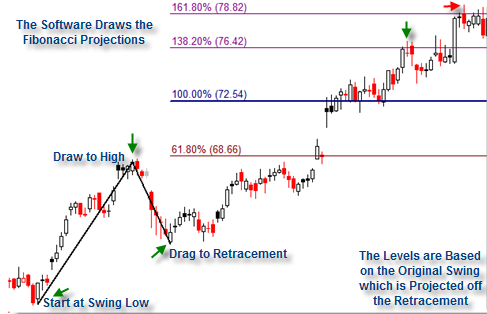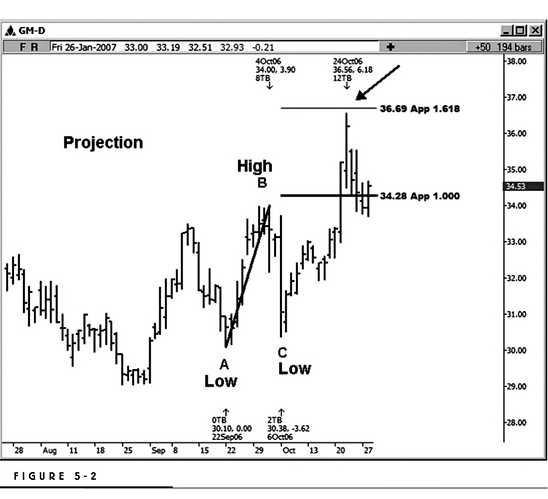How to apply Fibonacci price projection in kite platform… I Read this topic from this. Book “Fibonacci Trading: How to Master the Time and Price Advantage, chapter-5”
Traders often get excited when they believe they can use an indicator or tool to ‘project’ prices into the future, but in reality, price projections just give us a possible target that the market may or may not achieve.
Traders use Fibonacci Price Projections (also called “Extensions”) in a similar manner as Fibonacci Retracements, but they are looking to project where price will travel upwards to hit resistance (in an uptrend) rather than find where price will find support via retracements.
While traders often use Fibonacci ratios 38.2%, 50.0%, and 61.8% for retracements, it is quite common to use 61.8%, 100.0%, 132.8%, and 161.8% for Price Projections and Extensions.
What exactly does this mean?
To draw a Fibonacci Projection grid, we’ll need to identify a swing low, swing high, and price retracement against the swing high (for uptrends – reverse the definition for projecting price in a down-trend). Let’s see an ideal example:

This example is done in the context of an uptrend. We start our projection grid off a Swing Low and then draw the first line to the next Swing High.
- In an up-trend, Identify a Swing Low (retracement)
- Use your Fibonacci Projection Tool to move from the Swing Low to the next Swing High for the ‘base.’
- Draw the Second Line from the Swing High to a Retracement (Swing) Low
The first line (from Swing Low to Swing High) serves as the “Measurement Swing” by which we will soon create Fibonacci Projections. The “Retracement” Swing provides the base from which to project Fibonacci relationships of the first swing.
Now, unlike the Fibonacci Retracement tool where we are looking to find support, we are now looking to find points above price where the market is likely to experience Overhead Resistance. These will now serve as Profit Targets to help us establish risk/reward relationships.
To answer your question specifically, Kite doesn’t have the Fibonacci projection tool (wherein you specify 3 points, not just 2), iinm.
